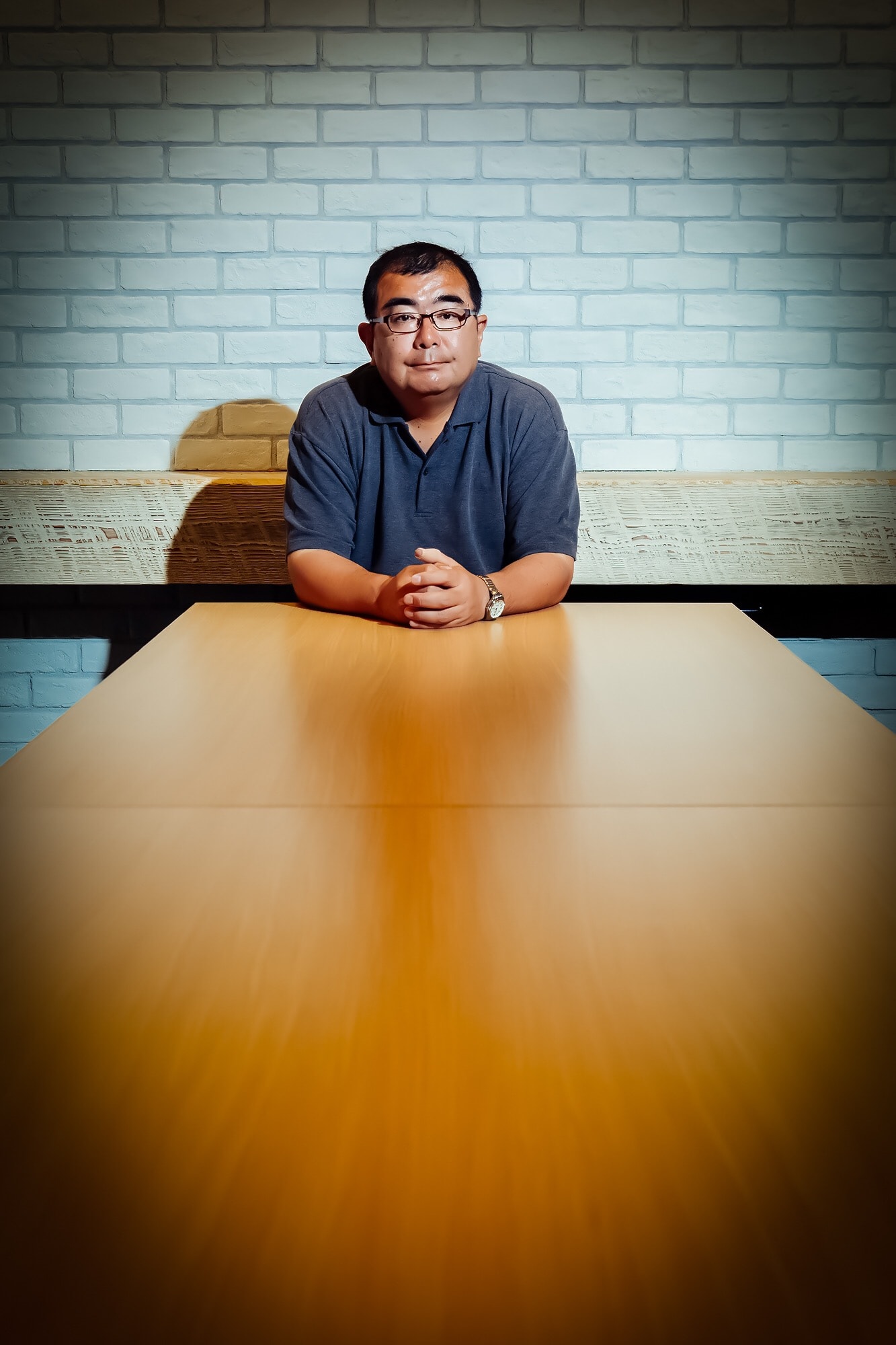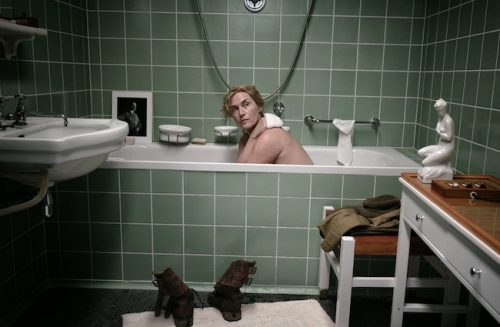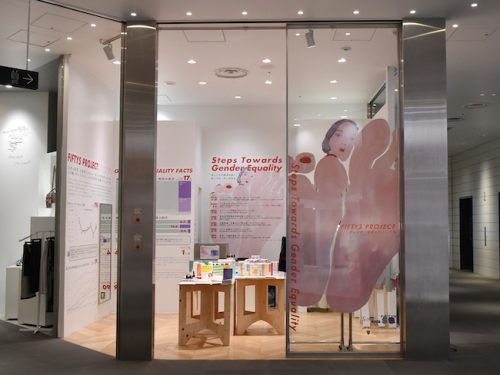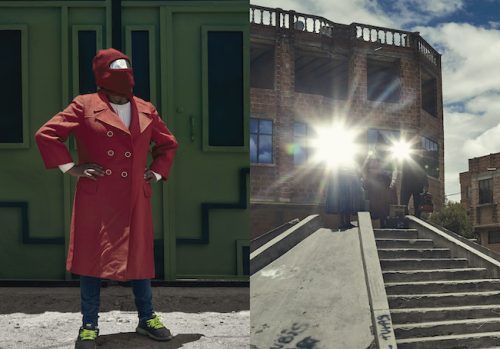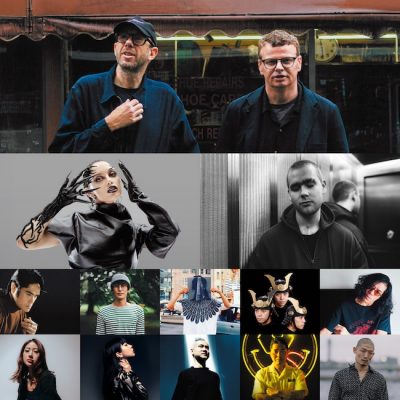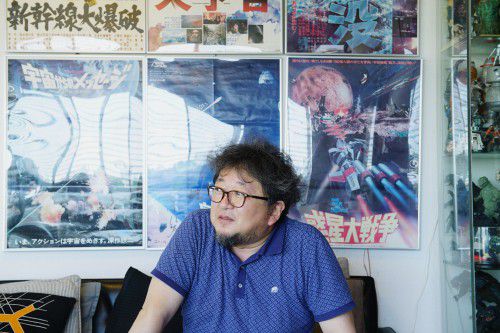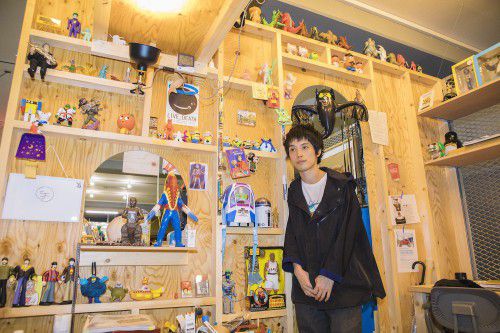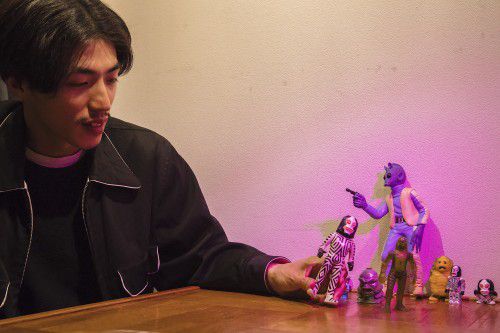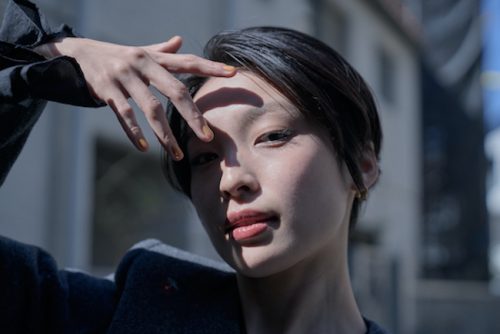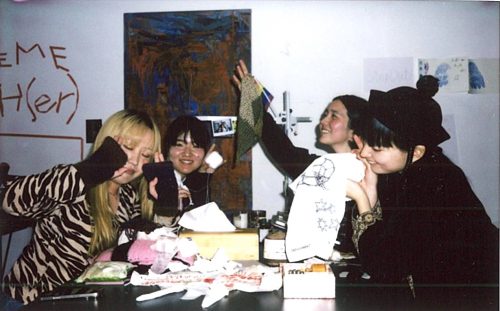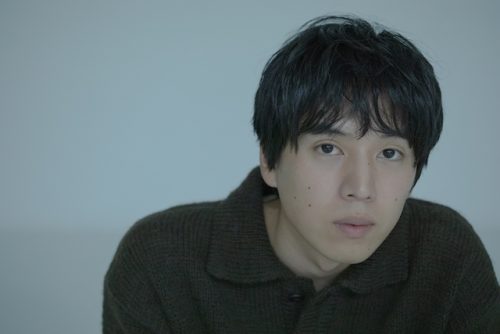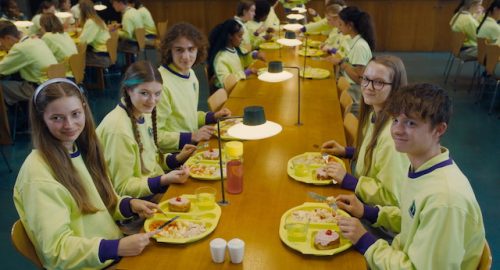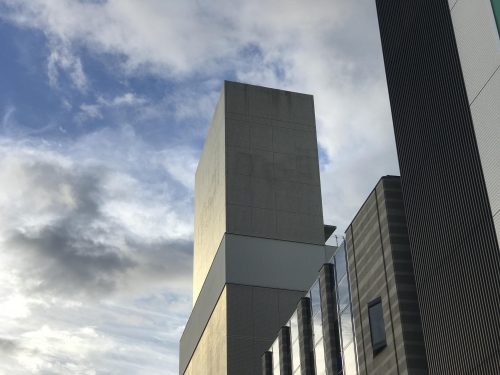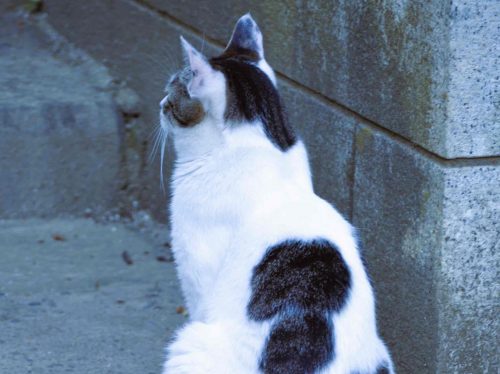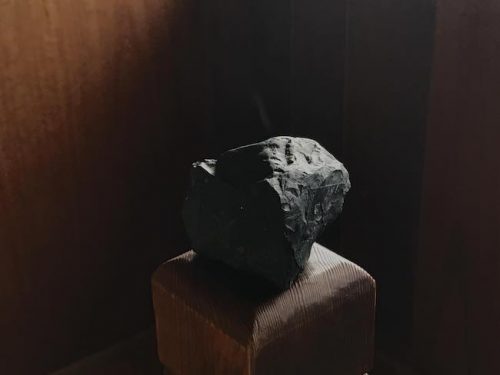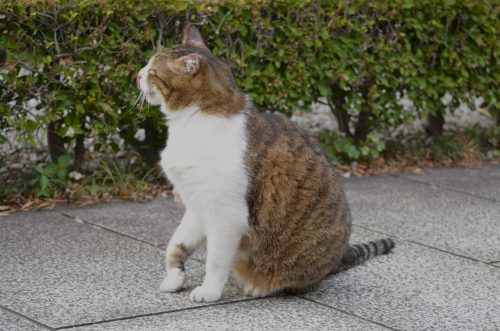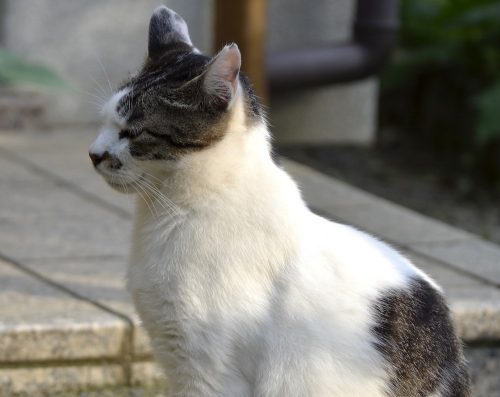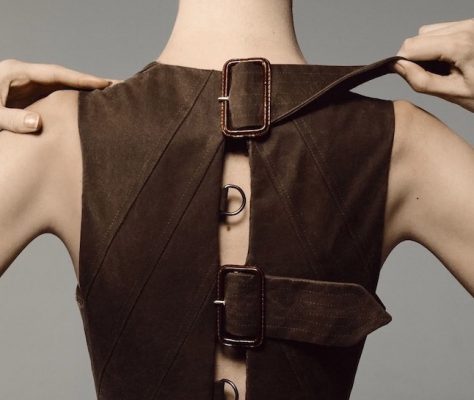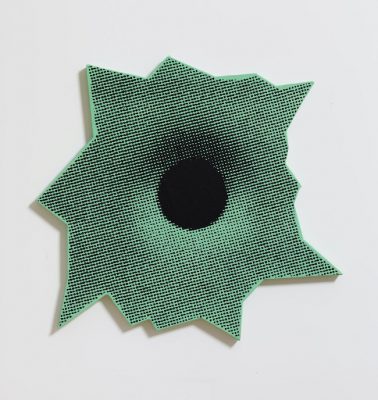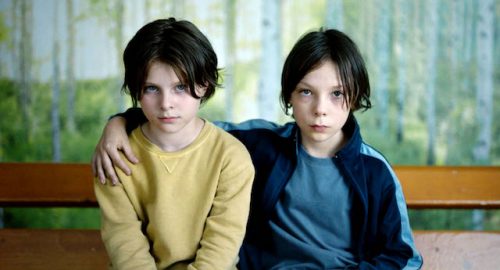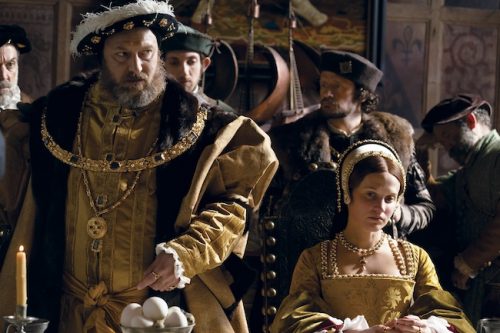怪獣や光線を私たちは普段の暮らしの中で見ることはない。そのような現実には起こらない現象と私たちを、映画やテレビの中で出会わせてくれるのが”特撮”という技術である。特撮技術の持つ表現の可能性はテクノロジーの進歩とともに拡がりをみせて今日にいたっている。例えばデジタル化の到来以前はフィルムを一コマずつ手作業によって合成が行われていた。デジタル技術が浸透した今となってはコンピュータ上での作業となった合成技術だが、かつては光線をひとつ作るにも職人芸とも呼べる細かな作業、膨大な作業量を要した時代背景があったのだ。そしてクリエイターの、誰も見たことのない現象を創り出す想像力は今も昔も子供から大人まで熱狂させ続けている。『ゴジラVSキングギドラ』(1991年)や平成ガメラ三部作などの作品で視覚効果として携わった松本肇氏に、全ての視覚表現がコンピュータで処理できる現代にいたるまでの道のりと、特撮を実現させる表現者の想像力について訊いた。
We rarely see monsters or rays of light in our daily lives. What enables us to encounter such phenomena that do not occur in reality in movies and television, is a technique commonly known as special effects. Specialeffects allow opportunities of expression that have become widespread today, along with advances in technology. For example, prior to digitalization, compositing was done through manual labor, one frame at a time. Although digital technology has permeated and digital compositing is now done on computers, there was once, a time when it took craftsmanship – detailed, enormous amounts of work – to create even a single ray of light. The creators’ imaginations that create phenomena that no one has ever seen have continued to exhilarate people of all ages. We asked the master of visual effects, Hajime Matsumoto, who has worked on Godzilla vs. King Ghidora (1991) and the Gamera Trilogy, about his journey through the world’s progress in computerized visual effects and his thoughts on creators’ imaginations that make special effects happen.
——はじめに、松本さんの映画原体験からお訊かせください。
—First, please tell us about your formative experiences in film.
松本「『フランケンシュタインの怪獣サンダ対ガイラ』(1966年)がたぶん初めて観た映画です。それからというもの特撮映画、怪獣映画が作りたいと思ったところから現在に至ります。だから今、怪獣やクリーチャーが世間的にスポットを浴びているというのはこの時代だからこそという側面もあるのでしょうけれど、僕なんかずっと怪獣少年なので怪獣はいつもそばに居ます。そこまで特撮や怪獣が好きなのは、とにかくかっこいいからの一言です(笑)。当時の作品を観ても今も変わらずかっこいいと思います。特に『サンダ対ガイラ』は、自分の中で節目となるタイミングでちゃんと観返して気持ちを整えるほど僕にとっての重要な作品の一本ですね。この作品の中で”メーサー殺獣光線車”という兵器が出ていて、怪獣をパラボラから光線を出してやっつけるんですよ。子供の頃もずっとパラボラの落書きばかり描いていました。『地球防衛軍』(1957年)という作品でも、”マーカライトファープ”というパラボラ兵器が出てきますが、円谷英二さんの作りだす未来兵器は本当にかっこいい。こういった光線などの特撮のかっこよさに映画原体験の頃から惹かれたんです」
Matsumoto: “The first movie I ever saw was probably The War of the Gargantuas (1966). From there, I began wanting to make special effects films and monster films, which brought me to what I do today. I do believe that monsters and creatures being put on the spotlight now is on one hand, due to our generation. But on the other hand, I’ve always been a monster/creature fan so they have always been by my side. The reason why I love special effects and monsters so much, is simply said in a few words: because they are so cool. Even when watching the old works, I think they are still cool to this day. Sanda Vs. Gaira is especially one that is important to me. I re-watch it when I’m entering a new chapter in my life to prepare and calm my feelings. There is a part in this film where a military vehicle called the ‘Type 66 Maser Cannon’ releases light beams from its parabolic antenna to defeat monsters. When I was a child, I would always doodle those antennas. There is a parabola weapon called ‘Marker-light FAHP (Flying Attack Heat Projector)’ in The Mysterians (1957). Eiji Tsuburaya’s futuristic weapons are so fascinating. Hence, I was attracted to the coolness of light rays produced by special effects since I was first exposed to movies.
——映像の中の光線のような表現が、合成という技術により出来ていると認識されたのはいつからですか?
—When did you become aware that these light expressions in movies were created from compositing techniques?
松本「中高生になってからです。ちょうどその頃、1976〜1983年くらいにはゴジラの映画が作られなくなりウルトラマンのテレビシリーズも終わって怪獣や特撮作品が枯渇していました。そんな中『昔、こんなのあったよね』と僕らよりもう一世代上の人たちが熱心にテレビ再放送を観て、監督の名前だとかクレジットをメモしたものを同人誌で出して、それを中高生の僕らはありがたく読んでいたんです。そこには撮影や美術、そして合成技術という文字もあって『ああ、光線は合成技術というもので出来ていたんだ』と分かったというのが芽生えですね。そこから、なんとかしてずっと憧れていた光線を作る人になりたいと思い始めました。その頃にはただ見るだけの立場から、作り手になるという意識になったので高校の頃には部活に入って8ミリのSF映画を撮っていましたよ。それからは映画の専門学校に入り、卒業する時に就職掲示板に『デン・フィルム・エフェクト』(光学作画・飯塚定雄氏が代表取締役を務める光学合成の制作会社)の文字を見つけて『僕が行きたかったのはここだ』と入社しました」
Matsumoto: “Not until around middle school or high school. Right around that time, around 1976-1983, the Godzilla films were unable to be produced and the Ultraman T.V. series had finished, so monsters and special effects films were wearing out. During the midst of that, people of the generation above me would reminisce, “Ah, we had this back in the day”, and enthusiastically watch the reruns on T.V. They would take notes on the names of directors and various credits and publish them on Fanzines, and middle/high schoolers like I would thankfully read those. In the Fanzines, there were words like ‘shooting’, ‘art’ and “compositing techniques’ and that made me realize, “Ah, these light beams are created through things called compositing techniques.”
It all began there.” From there, I began to think that somehow, I would become the person who creates those light beams I was so used to. That was the time when I went from being just an observer to a creator,so by high school I joined a club and was shooting 8mm Sci-Fi films. From there, I got accepted into film school and at graduation, discovered Den Film Effect (a production company specializing in optical compositing, run by CEO and optical photographer, Sadao Iizuka) realizing, “This is where I want to go” and joined the company.
——キャリアをスタートされた当初はまだアナログ合成技術の手法だったかと思うのですが、途中で時代はデジタル技術に移行していきますよね。表現者として、テクノロジーの変化にどのように向き合ってこられましたか?
—Back when you first started your career, I believe compositing was an analog process. But since then we have evolved to use digital technologies. As an artist, how have you faced the changes in technology?
松本「その辺を1991年〜97年あたりはずっと暗中模索しました。昔は全てフィルムでしたが、デジタル化によって映像がデータ化されるようになったわけです。フィルムを一コマずつ撮影して合成していたものが、全てスキャンしてデータ化された映像をコンピュータ上で合成するようになったので、作業行程はもちろんのこと使用する機械も全然違うものになります。鉛筆からペンタブになるようにね。当時はまだデジタル合成を実現するための映像をスキャンしてデータ化する機械そのものが日本にはどこにも無い時代だったので、我々としては道具が無い中でどうするか?という何も無いところからのスタートでした。僕はツテを探してスチル専門のラボさんに、当時既にあった写真をデータ化してテレビに写すような機械のシステムを応用できないか?と機械を35㎜の映画対応にアレンジしてもらったんです。『この機械とこの機械を組み合わせたら出来ないか』と考えてはチャレンジしてというように本当に手探りでやっていました。
特に僕が視覚効果を手がけた作品で言うと、平成ガメラ三部作(『ガメラ 大怪獣空中決戦』(1995年)『ガメラ2 レギオン襲来』(1996年)『ガメラ3 邪神覚醒』(1999年))の間はデジタル化へ技術移行の時期でした。アメリカでは既にILM(ルーカスフィルムの特殊効果およびVFXの制作会社)が初めて実写映画にCG技術を取り入れて製作した『ターミネーター2』(1991年)が公開され、それを観て『凄い!』と本当に驚いたんです。その時点の技術でもこちらはビックリしていたのに、その後の『ジュラシックパーク』(1993年)がとどめを刺してきて(笑)。ハリウッドではドンドンとデジタル作品へ移行していて2000年にはもうCG技術は定着していましたから、当時の日本映画界の状況とは技術的にも環境的にも差異がありました。そう感じていたからこそ、この技術を日本映画でも実現したいと思い取り組んだのが平成ガメラでした」
Matsumoto: “During 1991-1997, I continued to grope in the dark about that. Everything was film back then,
but due to digitalization moving images were now able to be saved as data. What used to be shooting film one frame at a time and then compositing them, turned into scanning film data and digital compositing, so
not only did the work process change, but the machinery being used became completely different. Like changing from a pencil to a stylus. At the time, there were no machines in Japan that could scan movies and convert them to data for digital compositing, so for us it was like, what do we do without tools? We had to start from nothing. I searched for connections, and asked the lab guy who specializes in still photography if we could use the already existing photos, convert them to data and utilize a system that can show the photos on a television screen. In the end, I got him to arrange the machine to be compatible with 35mm film. It was a fumbling process of thinking, “What if I could combine this machine with that machine” and then trying it.
Among the films I worked on for visual effects, the Gamera Trilogy (Gamera : Guardian of the Universe (1995), Gamera 2 : Attack of the Legion (1996), Gamera 3 : Revenge of Iris (1999)) was a time when technologies were shifting. In the United States, ILM (Lucasfilm’s special effects/VFX production company)had already released Terminator 2 (1991), the first film ever to include CG technology in a live-action film. I saw that and said “Wow!” I was already blown away from the technology then, but then Jurassic Park (1993)really finished it off. Hollywood progressively transferred to digital film – by 2000 CG technology had already been established. There was a great difference, technologically and environmentally from Japan at the time.
Because I thought so too, Gamera was the product of my desire to utilize the same technology to make Japanese films.”
——松本さんは国内に機械がなかったところからデジタル化の実現に向けてスタートされたのですね。更には、松本さんの師でもある飯塚定雄さん(『ウルトラマン』のスペシウム光線など様々な光学作画を生んだ)がデジタル化の遥か前から新たな視覚表現を作り上げてきたような背景もあったわけで。
—Mr. Matsumoto, you started from having no technological resources in the country to make digitalization happen. In addition, Sadao Iizuka, who is also your mentor (he created Ultraman’s Spacium Ray and many other optical effects), had a background of creating new visual effects long before digitalization was introduced.
松本「飯塚さんは1954年の『ゴジラ』の時に、美術助手として参加し、『地球防衛軍』製作の際に、円谷英二にそのセンスを買われて新設された光学撮影部に呼ばれた人です。
飯塚さんは、光線の形状をイチから考え出したんですよ。今となっては光線とはこういう形のものだという共通認識がありますが、皆が思い浮かべる光線の形は飯塚さんの想像力から生まれたものです。クリエイターというのは、結局何も無いところにいたらやるしかないんですよ。これは特撮だけにとどまらず、全ての表現の地続きの延長線上に、今日の映画作品がある。それを体現しているのが今年の『シェイプ・オブ・ウォーター』だと思います。あの作品は怪獣映画をはじめとするこれまでの映画史上の様々な要素を上手に昇華させていますね」
Matsumoto: “Mr. Iizuka participated in the 1954 Godzilla as an art assistant, and was invited into the new optical imaging unit after Eiji Tsuburaya spotted his talent in the production of The Mysterians. Mr.Iizuka brainstormed the ray shapes from scratch. Now, there is common knowledge on what a ray of light looks like,but the shape of a light ray that everyone imagines today was born from Mr. Iizuka’s imagination. Creators have no choice but to do their work when placed in an environment without resources. This goes not only for special effects, but for all means of expression, and that is the reason why today’s films exist. I think this year’s Shape of Water embodies that. Along with monster films, it beautifully sublimates the many elements involved in film history.”
——ギレルモ・デルトロ監督自身、これまでの映画に対する愛をこめて『シェイプ・オブ・ウォーター』を作ったと語っています。
—Director Guillermo del Toro himself states that he created Shape of Water with love for all films created.
松本「デルトロ監督は、自分が愛する作品のオマージュをこれだけやりたい放題やれていて本当に羨ましいなと思いました(笑)。『フランケンシュタイン対地底怪獣』(1965年/本多猪四郎監督)という作品で、女性科学者がフランケンシュタインの子供を育てるんです。その子供が脱走して人を襲っているという噂が流れる中、女性科学者は『あの子は人間です。たとえフランケンシュタインであっても人間でしょう』と言うんですけれど、僕は『シェイプ・オブ・ウォーター』を観ているときその台詞をずっと頭の中に浮かべていましたね。こういう世界観は、僕の中ではもともと本多猪四郎さんが作ってきたものなんです。そしてこの世界観を貫く精神は、遡れば『フランケンシュタイン』(1931年/アメリカ映画)にみられます。研究所を脱走したフランケンシュタインの怪人が湖のほとりを歩いていると少女に会う。怪人の彼は『あーうー』とかしか言えない中で、少女は『私はマリアよ。あなた名前は?』といった会話をするわけです。そこには恋愛感情ではないけれど、少女のほのかな人間愛があるじゃないですか。また、『キングコング』(1933年)で描かれるのは母性愛です。キングコングからしたら初めて見た女性という存在に対して母親的な愛情を感じる。そして、この『シェイプ・オブ・ウォーター』で描かれるのは少女でもなければ母親でもない、”生身の女性”との性愛です。この点がデルトロ監督による現在の新しい観点の創造だと思います。とは言え、これも源流を探せばやはり本多監督の『ガス人間第1号』辺りにたどり着くのではないでしょうか。クリエイターというのはみんなそうして新しいものを作る際にかつてどういう表現があったかという立ち返りの作業をいつも大事にしていると思いますね。クリエイティヴ、創造にあたって黒澤明監督の言葉を引用するならば『創造とは記憶から生まれる』。なにか新しいものを作るとき、ゼロから生まれるわけがない。自分が見たものや聞いたことを思い出す、そういうことから新しいものは生まれるのです。それはやはり育ってきた環境の文化も影響力をもつと思います。例えば、日本では八百万の神がいて『この紙を破ったら紙は痛がるだろうな』なんて感覚も特有のものです。そういった昔からの文化背景もクリエイターに影響して日本のクリーチャー観には反映されているとも考えられますよね」
Matsumoto: “I really envied Director del Toro for being able to do all that he could to pay homage to the films that he loves. In Frankenstein Conquers the World (1965/Director Ishiro Honda), a female scientist raises Frankenstein’s child. Through a rumor that the child has escaped and is attacking people, the female scientist says, “That child is human. Even if it’s Frankenstein, it’s human.” While watching Shape of Water, those lines kept popping into my head. For me, worlds like this were originally created by Ishiro Honda. And when looking back, spirits that commit to this outlook of the world were seen in Frankenstein (1931/American Film). Supervillain Frankenstein, who has escaped from the laboratory, is walking along the lake and meets a girl. Although he, as a monster, can only say phrases like “Ah, oo”, the girl communicates with him, “I’m Maria. What’s your name?” There, we see not romance, but the girl’s faint love for humans. In King Kong(1933), maternal love is depicted. From King Kong’s perspective, he feels a maternal love for the first woman he ever sees. And then, Shape of Water depicts neither the girl nor the mother – but love between a ‘living’(human) woman and a creature. I believe this is a creation by del Toro, of a new, modern perspective. That being said, if we search for an origin, as expected we may arrive at Director Honda’s The Human Vapor.
I believe when making something new, all creators value looking back at what kinds of expressions there were in the past. Upon creativity and creation, if we take Director Akira Kurosawa’s words, “creation is born from memory.” When creating something new, there’s no way it can truly be born from scratch. New things are born from remembering the things you saw and heard in the past. I think the culture that one grew up in also influences that. For example, in Japan there is a Yaoyorozu no kami, or ‘God of eight million’ and thinking, “If I rip this paper, the paper will probably be in pain”, is a peculiar sensation. In the same way, one can say that historic cultural backgrounds influence creators and is reflected in the way the Japanese view creatures.”
——過去の作品や文化、そして自分自身の個人的な記憶。ルーツから想像力が育まれるのですね。
—Past works and culture, as well as personal memories. You’re saying imagination derives from roots.
松本「そうです。今でも、普段の生活の中に目に入るもので何がかっこいいのか、自分は何が好きだと思うのかというのを常に意識しているようにしています。大事にすべきなのは、自分の宝箱を心の中に持つということ。そして、子供の頃そこへ入れたものを大切にする。たとえ宝箱の中身を他人に非難されても、表向きは『そんなものはもう卒業したよ』とか言っておいて自分自身で大切にしていれば良いんです。そして宝箱の中身をたまに見て、それがまだ輝いているかを確認する。もし大人になって、もうそれが輝いてなかったらそれはそれで捨てて新しい宝物を探せばいいのです。僕の場合は、未だに『サンダ対ガイラ』が真ん中で輝いている。今でも『サンダ対ガイラ』を観ると初めて見たときの胸が高鳴った記憶が蘇って熱くなりますよ。そういった記憶こそが次の新しい創造に繋がっていくのです」
Matsumoto:“Yes. Even now, I try to always be conscious of things I think are cool that I see within my daily life and what I think I like. What’s important is to keep your treasure box inside your heart. And to cherish the things you put inside it when you were a child. Even if others criticize the things inside the treasure box, on the outside say,“I’ve grew out of such a thing”, but cherish it inside of yourself. Then occasionally look inside of the treasure box and check if it’s still shining. If when you’re an adult, that item isn’t shining anymore, simply toss it out and look for a new treasure. In my case, Sanda Vs. Gaira is still shining in the middle. Even now, whenever I watch Sanda Vs. Gaira the memory of my heart racing when I first watched it revives, and I get passionate.
Such memories are what connects to the next new creation.”
松本 肇(まつもと はじめ)
1963年神奈川県出身。日本映画の視覚効果担当者、ビッグエックス代表。『ゴジラvsキングギドラ』 『ガメラ 大怪獣空中決戦』『ガメラ2 レギオン襲来 』『ガメラ3 邪神覚醒』『クロスファイア』『ゴジラ・モスラ・キングギドラ 大怪獣総攻撃』『リング』『らせん』などで視覚効果に携わる。『ゼイラム』では脚本も担当。公開待機作に『3D彼女 リアルガール』『地上の星 二宮金次郎伝』がある。
著書:『光線を描き続けてきた男 飯塚定雄』(洋泉社)
Amazon.co.jp
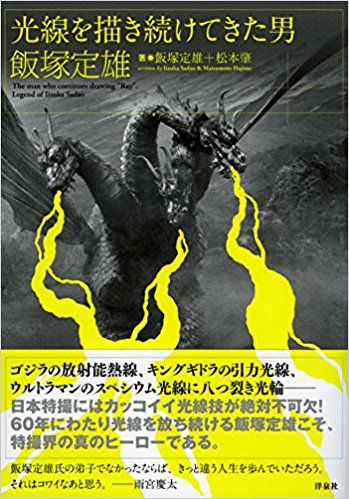
『日本特撮大全』(学研プラス)
Amazon.co.jp
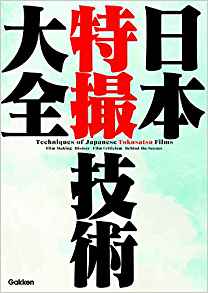
Hajime Matsumoto
Born 1963 in Kanagawa, Japan. Visual Effects Artist for Japanese films, represents BigX.
Took part in visual effects in Godzilla vs. King Ghidora, Gamera : Guardian of the Universe, Gamera 2 : Attack of the Legion, Gamera 3 : Revenge of Iris, Pyrokinesis, Godzilla, Mothra and King Ghidorah Giant Monsters All-out Attack, Ringu, Rasen, etc. Also wrote the screenplay for Zeram. Upcoming releases include Real Girl and Chijyou no Hoshi – Kinjiro Ninomiya.
photography Masakazu Yoshiba
interview&edit Shiki Sugawara
